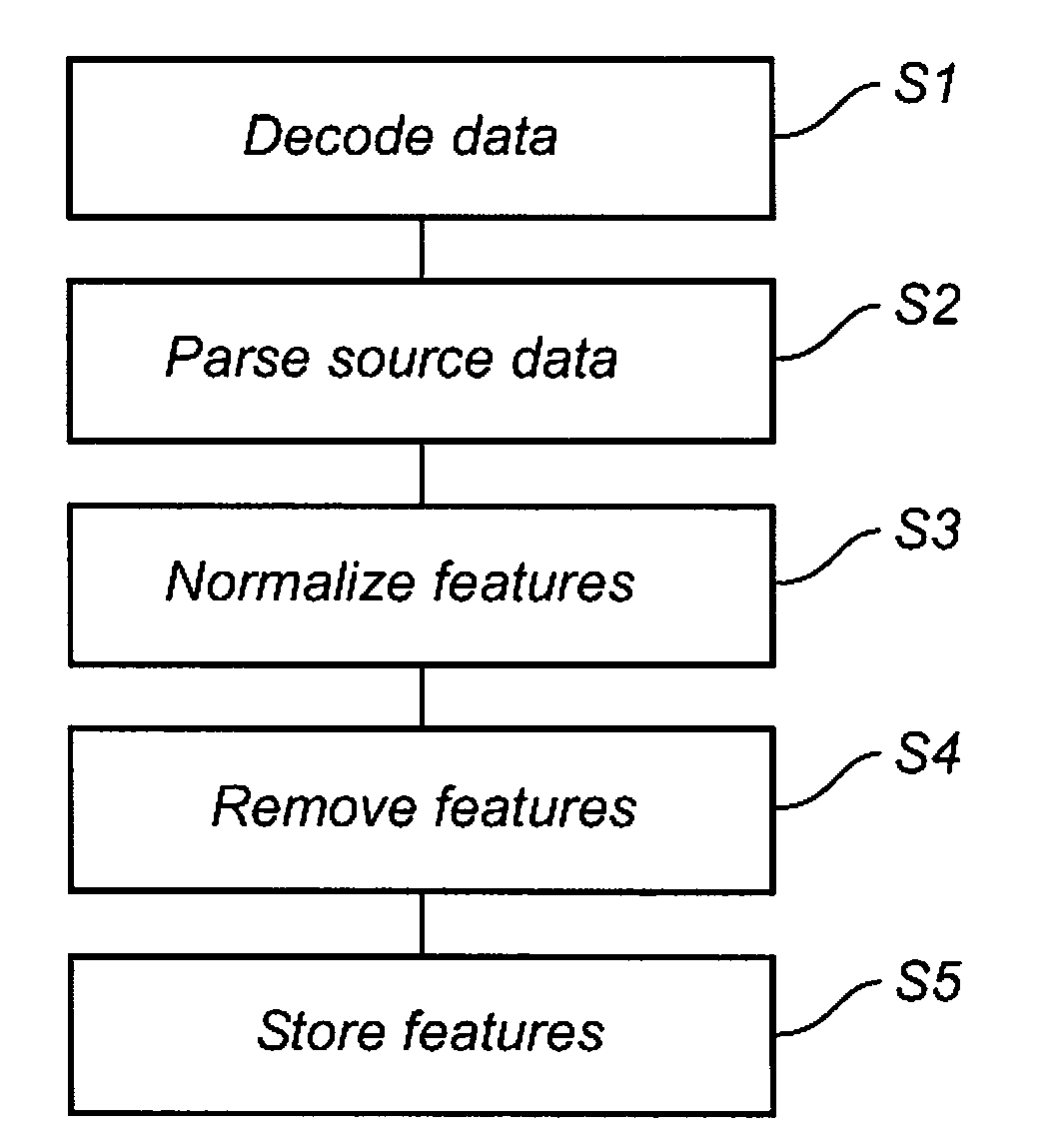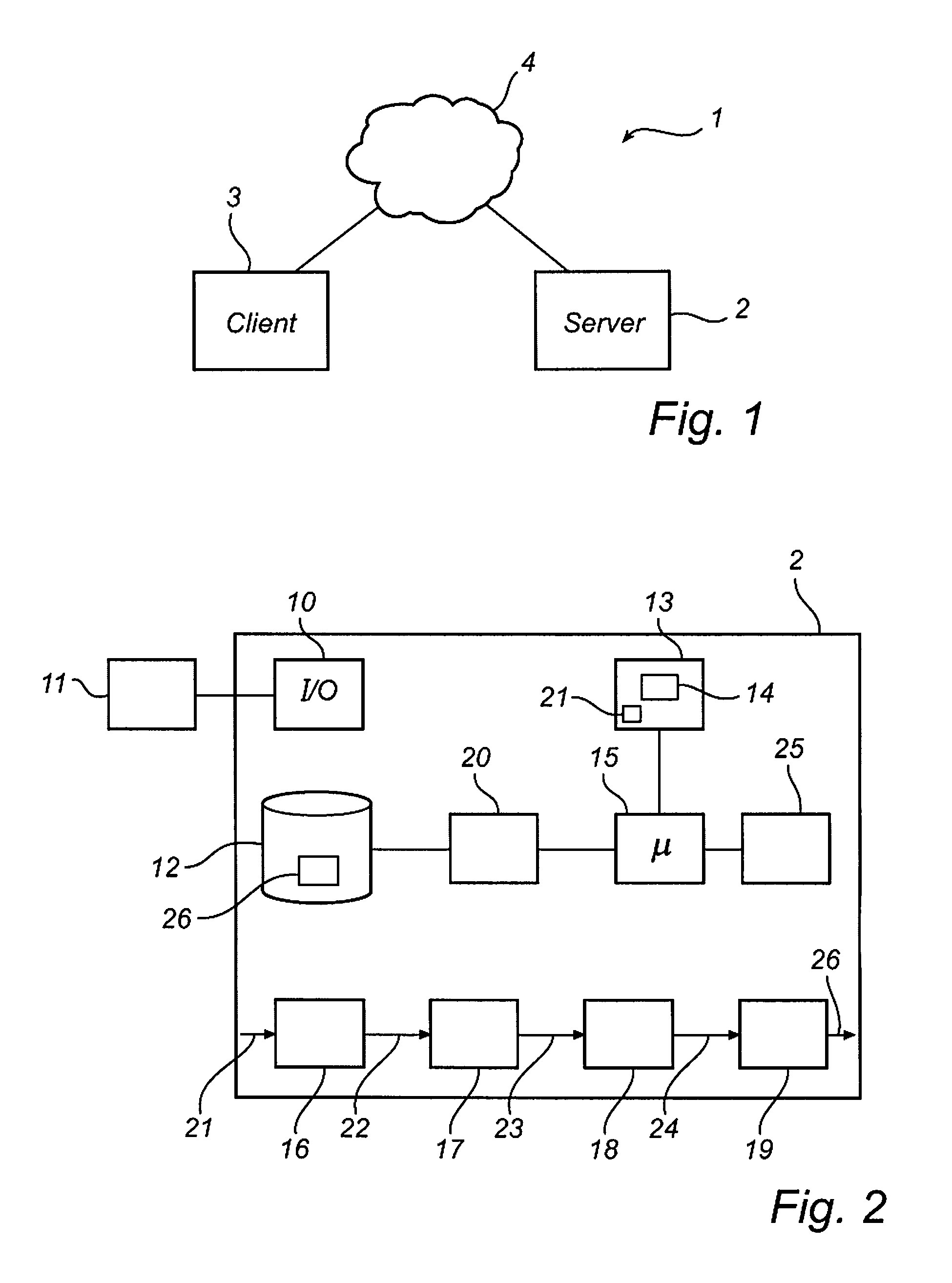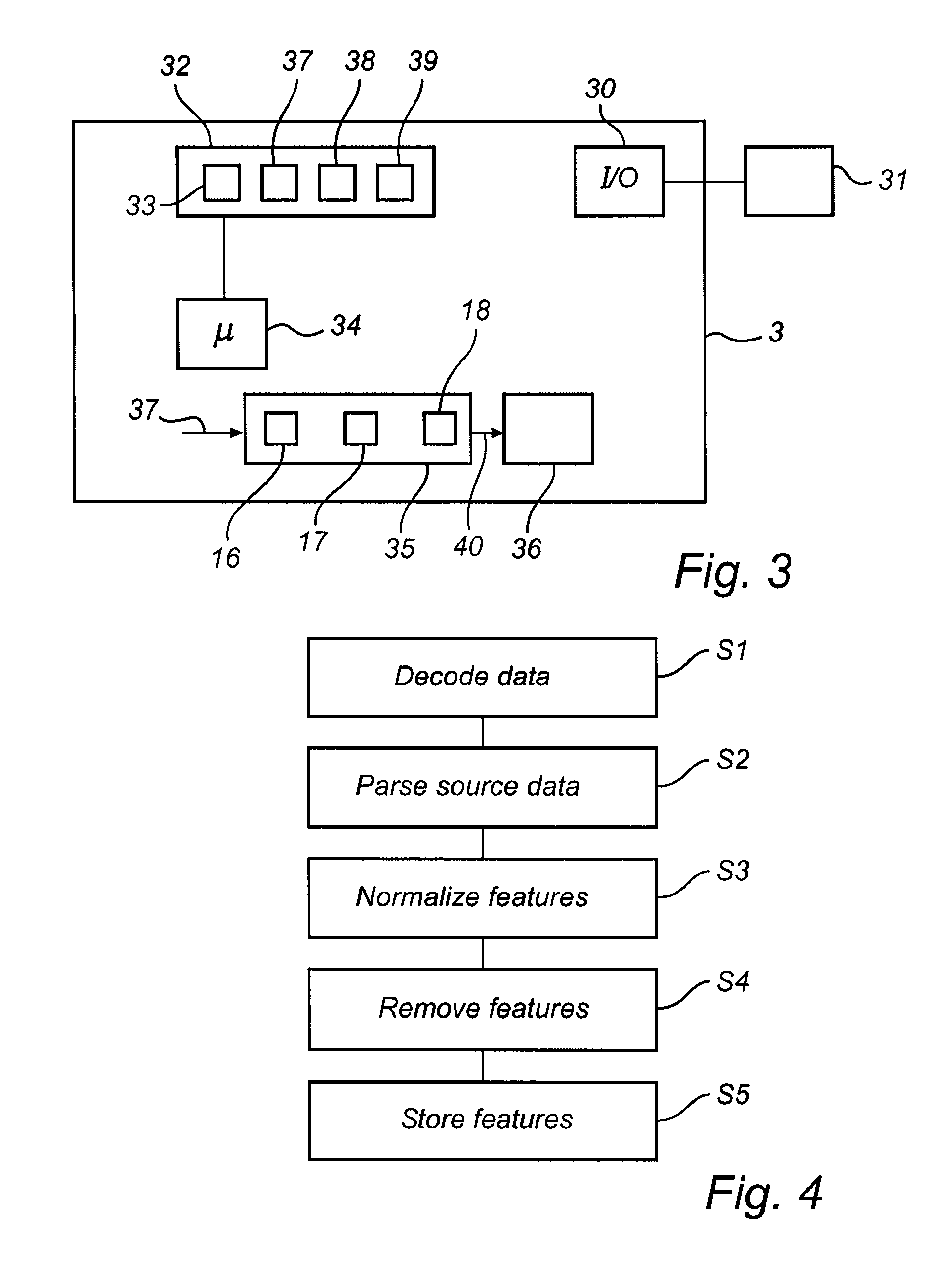Malware identification and scanning
a malware and scanning technology, applied in the field of malware identification and scanning, can solve the problems of difficult to disguise, unwanted effects, harmful to the computer system, etc., and achieve the effect of specific identification of malwar
- Summary
- Abstract
- Description
- Claims
- Application Information
AI Technical Summary
Benefits of technology
Problems solved by technology
Method used
Image
Examples
Embodiment Construction
[0033]FIG. 1 shows a malware detection system 1 according to an embodiment of the present invention. The system has two main parts; a server part 2 where genetic signatures are determined based on known malware, and a client part 3, where scanning of collections of data, e.g. computer files or data streams, is performed, in order to identify known and previously unknown malware based on the genetic signatures. The systems are able to communicate at least temporarily via a computer network connection 4 such as the Internet. The network connection allows the server part 2 to send additional genetic signatures to the client part 3. Such updates may be performed regularly, according to an automatic subscriber procedure known in the art, or occasionally, following a user instruction. The network connection 4 also allows the client part 3 to communicate with the server part 2, for example in order to return scanning results and statistics, as well as newly identified previously unknown ma...
PUM
 Login to View More
Login to View More Abstract
Description
Claims
Application Information
 Login to View More
Login to View More - R&D
- Intellectual Property
- Life Sciences
- Materials
- Tech Scout
- Unparalleled Data Quality
- Higher Quality Content
- 60% Fewer Hallucinations
Browse by: Latest US Patents, China's latest patents, Technical Efficacy Thesaurus, Application Domain, Technology Topic, Popular Technical Reports.
© 2025 PatSnap. All rights reserved.Legal|Privacy policy|Modern Slavery Act Transparency Statement|Sitemap|About US| Contact US: help@patsnap.com



